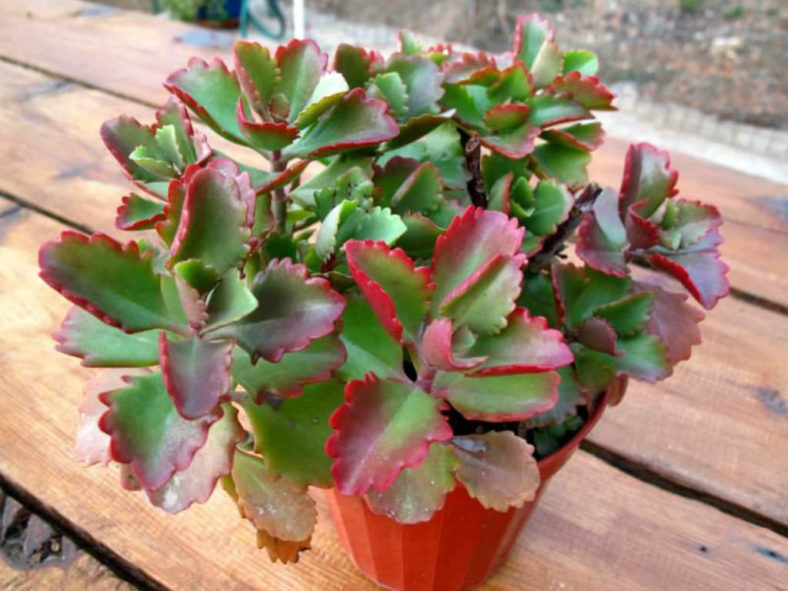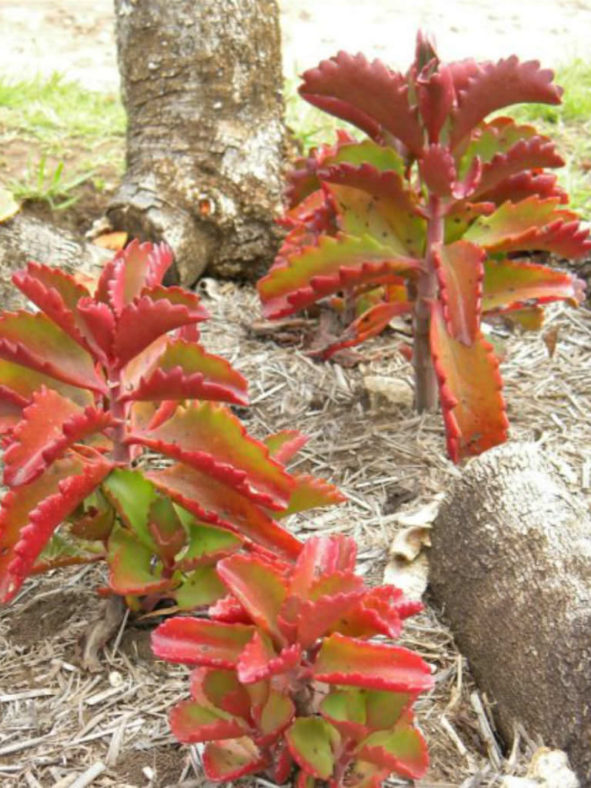Scientific Name
Kalanchoe sexangularis N.E. Br.
Common Name(s)
Six-angled Kalanchoe
Synonym(s)
Kalanchoe mocambicana, Kalanchoe mossambicana, Kalanchoe rogersii, Kalanchoe rubinea, Kalanchoe sexangularis var. intermedia, Kalanchoe vatrinii, Kalanchoe vatrinii var. intermedia
Scientific Classification
Family: Crassulaceae
Subfamily: Sedoideae
Tribe: Kalanchoeae
Genus: Kalanchoe
Etymology
The specific epithet "sexangularis" (pronounced "seks-an-gew-LAIR-iss") means "six-angled, having six angles" and refers to the growth habit of this species.
Origin
Kalanchoe sexangularis is native to South Africa, Eswatini, and Zimbabwe. It grows on rocky slopes, usually in the shade or semi-shade of trees or shrubs.
Description
Kalanchoe sexangularis is a sparse succulent shrublet with few erect or recumbent, reddish branches that bear broadly elliptical to ovate, green to deep ruby-red leaves with strongly scalloped margins. It can grow up to 3.3 feet (1 m) tall. The leaves are folded lengthwise and more or less recurved, measuring up to 4.8 inches (12 cm) long and 3.2 inches (8 cm) wide.
The flowers are yellowish-green and yellow, and appear in a much-branched inflorescence in winter and spring. The inflorescence is a flat-topped thyrse with several dichasia and can grow up to 12 inches (30 cm) tall.

How to Grow and Care
Hardiness: USDA hardiness zones 9a to 11b: from 20°F (-6.7°C) to 50°F (10°C).
Kalanchoe care is minimal, but be cautious about light levels. Intense sunlight can burn the tips of the leaves. Place pots in partial-sun to light-shade areas when growing Kalanchoes.
The flowering varieties are highly rewarding for their colorful and long-lasting flowers. They prefer bright, sunny locations, especially in the growing season. Water moderately from fall through winter, when growth is most active. Reduce watering during the hottest summer months, when plants are mostly dormant, and during winter, when growth slows significantly. Let the soil surface dry out between waterings. Watch the fleshy leaves for signs of water distress. An ordinary potting soil mix is fine. Feed bi-weekly during the growing season with a liquid fertilizer, or use slow-release pellets.
These small plants require repotting every few years. When repotting, take extra care in handling, as the leaves are somewhat brittle and can snap easily. Clay pots work exceptionally well for planting Kalanchoes. Ensure pots drain well and that saucers can be easily emptied.
Learn more at How to Grow and Care for Kalanchoe.
Links
- Back to genus Kalanchoe
- Succupedia: Browse succulents by Scientific Name, Common Name, Genus, Family, USDA Hardiness Zone, Origin, or cacti by Genus
Photo Gallery
Click on a photo to see a larger version.


